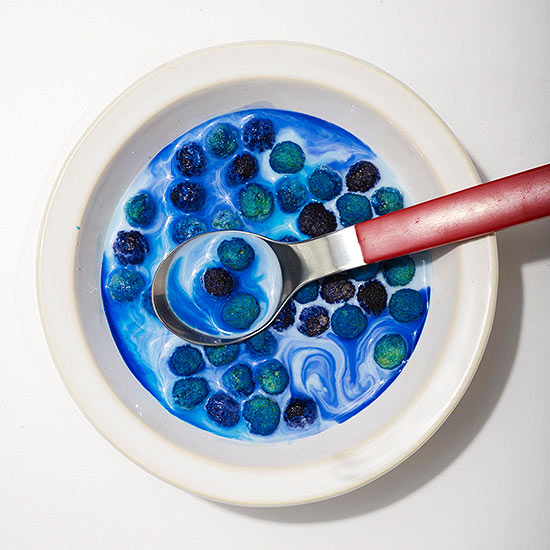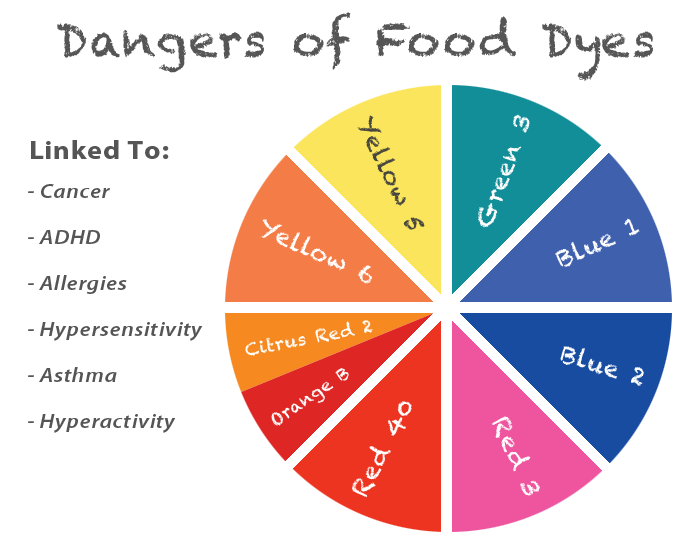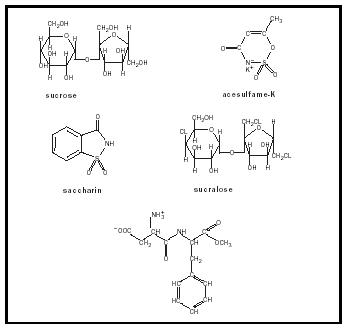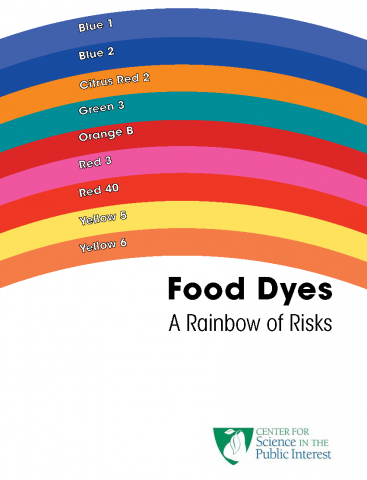WHY DOES OPTIMAL HEALTH SYSTEMS USE NO FOOD COLOR DYES OR ARTIFICIAL FLAVORINGS IN ANY OF ITS FORMULAS?
SIMPLE: WE WANT YOU TO REACH OPTIMAL HEALTH SAFELY.
“If a company uses artificial sweeteners or color food dyes, they don’t care about your health as much as OHS does.”
That is the bottom line and research backs us up.

If you consume supplements the come in colors that are anything but earthy, you’re taking in dyes. The most widely used dyes are Red 40, Yellow 5, and Yellow 6, accounting for 90% of all dyes used. They contain carcinogens and may cause allergic reactions. Each year, about 15 million pounds of synthetic dyes go into the U.S. food supply—well, the processed U.S. food supply. Why are they used? Because humans shop with their eyes.
Most research on artificial food dyes in humans has focused on children. Some studies have showed that food dyes could lead to behavioral problems, such as reduced attention and increased hyperactivity.
Animal studies have linked food dyes to organ damage, birth defects, and certain cancers. For example, studies on male rats found that artificial colors may alter biochemical markers in vital organs, like the liver and kidney. Researchers have found that artificial food colorings may affect learning and memory.
In 2008 the Center for Science in the Public Interest (CSPI) in Washington, DC, petitioned the Food and Drug Administration (FDA) to ban artificial food dyes because of their connection to behavioral problems in children.1 Two years later a new CSPI report, Food Dyes: A Rainbow of Risks, further concludes that the nine artificial dyes approved in the United States likely are carcinogenic, cause hypersensitivity reactions and behavioral problems, or are inadequately tested.2
Artificial dyes derived from petroleum are found in thousands of foods.3 In particular breakfast cereals, candy, snacks, beverages and of course bodybuilding supplement powders like BCAA’s, Glutamine, Creatine and others.
Although there are hundreds of studies on all the different colored dyes, here is one just to show you the problem and a link to research on many. Studies indicate that small amounts of Blue no. 1 are absorbed through the GI tract. That’s not good. People getting tube feeds in the ICU tend to have weak GI tracts. Beginning in 1999 a series of reports appeared that indicated Blue no. 1 could pass across the digestive tract and into the blood, often with catastrophic penalty. In 2003 the FDA advised against putting this dye in feeding tubes, but it’s still in food.
If you are taking supplements with food dyes, you are impeding your immediate health and possibly causing future harm. Here is a PDF listing all the damaging effects: Summary of food dye studies (source: Center for Science in the Public Interest)
The bottom line with food dyes is that you get enough of them without tying in cereals and other foods. What would you gain from buying multivitamins that come in a rainbow of colors?


ARTIFICIAL SWEETENERS
Sucralose has been shown to dramatically reduce the number of healthy flora (probiotics) in the gut. These little guys are supposed to be in your digestive tract to help absorb healthy nutrients and keep the bad bacteria and pathogens that cause disease out. They also provide a tremendous boost to your immune system and general sense of wellbeing.
As the most popular artificial sweetener in history, aspartame (NutraSweet, Equal, Spoonful) is consumed by more people than any other synthetic chemical in the world.9 Industry portrays aspartame as an innocuous food additive with no adverse effects. Such a position seems difficult to justify.
Aspartame is composed of methanol (methyl alcohol), aspartic acid and phenylalanine. Methanol is a known neurotoxin and cumulative poison.10 At high temperature, methanol breaks down into formaldehyde and formic acid, both known to cause reactions in sensitive individuals.11 In high doses, aspartame damages brain cells and induces brain tumors.12 The FDA has received more adverse reaction reports due to aspartame than any other food additive.13
In 1981, the FDA approved aspartame using flawed studies from the manufacturer.14 FDA Commissioner Aurthur Hayes approved aspartame despite its known risks.15 In 1983, Hayes left the FDA to join a public relations firm for G.D. Searle Company, the maker of aspartame.16 Searle is now owned my Monsanto. The American Dietetic Association openly endorses aspartame, and provided a free public information hotline, funded by Monsanto.17
So the elephant in the room question is this: WHY DO SO MANY OTHER SUPPLEMENT COMPANIES SELL YOU PRODUCTS WITH FOOD COLOR DYES AND ARTIFICIAL SWEETENERS? Simple answer but nobody wants to take those big companies on (except us). If it tastes sweeter and looks pretty, it sells more and all they care about is sales, not your health.
We will get nasty letters from those companies claiming the opposite but the blunt truth is that the research shows those ingredients are bad for your health and OHS chooses not to use them.

Using OHS products is safe and simple. We sometimes get calls from doctors, asking why their latest bottle of one product or another is a different shade from the last one they had. The answer is simple: the colors change with the season. So, a spring harvest will look a little different from a fall harvest. That subtle color shift is proof positive that we don’t ruin our supplements with dyes.
REFERENCES
9 Mullarkey, B., “Sweet delusion,” Informed Consent, Sept./Oct. 1994, p. 35 US Air Force, “Aspartame alert,” Flying Safety, 48:20, 1992.
10 Louis R., Sax’s Dangerous Properties of Industrial Materials, 8th ed., Van Nostrand Reinhold, 1992, p. 2251.
11 Potenza, D., “Aspartame: clinical update,” Connecticut Medicine, 53:395, 1989.
12 Roberts, H., “Does aspartame cause human brain cancer?,” J Advance Med, 4:236, 1991. Gross, A., Congressional Record, SID 835:131, Aug. 1, 1985.
13 US Department of Health and Human Services, “Report on adverse reactions in the adverse monitoring system,” Feb. 28, 1994.
14 US General Accounting Office, “Report to the Honorable Howard M Metzenbaum, US Senate: FDA Food Additive Approval Process Followed for Aspartame,” GAO/HRD-87–46, June 1987. Bressler, J., FDA, “The Bressler Report: Investigation of Searle Laboratories,” Aug. 7, 1977.
15 “Aspartame approved despite risks,” Science, 213:984, 1981. Federal Register, July 24, 1981, p. 38285.
16 Mullarkey, B., as per note 96, p. 37.
17 “American Dietetic Association under attack,” Spectrum, May/June 1995, p. 7.
Please note: copyrights to images belong to respective sources. We do not own any of the rights.

